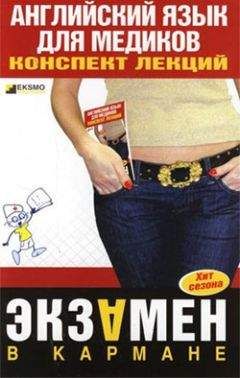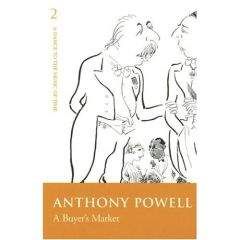Proteins are essential for the growth and rebuilding of tissue, but they can also be utilized as a source of energy. In some diets, such as the diet of the Eskimo, they form the main source of energy. Proteins are first broken down into amino acids. Then they are absorbed into the blood and pass round the body. Amino acids not used by the body are eventually excreted in the urine in the form of urea. Proteins, unlike-carbohydrates and fats, cannot be stored for future use.
The digestive system, or gastrointestinal tract, begins with the mouth, where food enters the body, and ends with the anus, where solid waste material leaves the body. The primary function of the organs of the digestive system are threefold.
First, complex food material which is taken into the mouth must be digested mechanically and chemically, as it travels through, the gastrointestinal tract.
Second, the digested food must be absorbed by passage through the walls of the small intestine into the blood stream so that the valuable energy-carrying nutrients can travel to all cells of the body.
The third function of the gastrointestinal tract is to eliminate the solid waste materials which are unable to be absorbed by the small intestine.
In the man the food in the mouth is masticated, that is to say it is bitten and broken up by the teeth and rolled into the bolus by the tongue.
The degree of chewing which is possible depends on the jaw articulation, the latter depending on the food. Mastication is voluntary, but it may be reflex, each closure of the jaw acting as a stimulus for their reopening.
After mastication the bolus is swallowed: the swallowing starts as a voluntary movement, but its accomplishment is a chain of reflexes involving the movement of the food by peristalsis, the closure of the nasal and tracheal openings, and the cessation of respiration. Cranial nerves V, IX, and XII are involved.
Peristalsis is a type of muscular contraction characteristic of the gut and consists in waves of contraction, these running along the muscles, both circular and longitudinal, towards the anus.
If the food is fluid it enters the stomach six seconds after the beginning of the act, but If It is solid it takes much long er, up to fifteen minutes, to pass down the esophagus.
In the stomach the food is thoroughly mixed by the series of contractions, three or four a minute, the contraction waves pass ing from the middle of the stomach to the pylorus. These tend to drive the food in the same direction, but the pylorus being closed, there is axial reflex, owing to which the food is well mixed. After a time – a bout a minute when water has been swallowed – the pylorus relaxes at each wave, allowing some of the stomach contents to enter the duodenum. Fat stays in the stomach longer than carbo hydrate, but all food leaves generally in three or four hours. In the small intestine the food continues to be moved by peristalsis, the latter controlled by the deep nerve plexus. The small intestine undergoes segmentation movements, the food contents being thoroughly mired The wall becomes constricted into a number of segments and then about five seconds later the constrictions disappear, there being another set exactly out of phase with the first. The large intestine undergoes infrequent powerful contractions, food having entered it. From the large intestine the food enters the rectum.
New words
fuels – топливо
carbohydrates – углеводы
fats – жиры
proteins – белки
diet – диета
principal source – основной источник
energy – энергия
glucose – глюкоза
immediate – непосредственный
use – использование
is converted – преобразован
glycogen – гликоген
stored – сохраненный
liver – печень
sugar – сахар
adipose – животный жир
excess – избыток
utilized – используемый
empty – пустой
essential – основа
growth – рост
rebuilding – восстановление
acids – кислоты
amino acids – аминокислоты
contractions – сокращения
pylorus – пилорус
direction – направление
axial reflex – осевое отражение
Past Continuous Tense (Past Progressive Tense) (действие в процессе, совершалось в определенный момент или протекало в течение четко ограниченного периода времени в прошлом).
Спряжение глагола to work в Past Continuous Tense Таблица 12
Раскройте скобки, употребляя глголы в Present Continuous или Past Continuous.
1. I (to write) an English exercise now.
2. I (to write) an English exercise at this time yesterday.
3. My little sister (to sleep) now.
4 My little sister (to sleep) at this time yesterday.
5. My friends (not to do) their homework now. They (to play) volley-ball.
6. My friends (not to do) their homework at seven o'clock yesterday. They (to play) volley-ball.
7. You (to eat) ice-cream now?
8. You (to eat) ice-cream when I rang you up yesterday?
9. What your father (to do) now?
10. What your father (to do) from eight till nine yesterday?
11. Why she (to cry) now?
12. Why she (to cry) when I saw her yesterday?
13. She (to read) the whole evening yesterday.
14. She (not to read) now.
15. Now she (to go) to school.
16. What you (to do) now? – I (to drink) tea.
17. You (to drink) tea at this time yesterday? – No, I (not to drink) tea at this time yesterday, I (to eat) a banana.
18. My sister is fond of reading. She (to read) the whole-evening yesterday, and now she (to read) again.
19. Look! My cat (to play) with a ball.
20. When I went out into the garden, the sun (to shine) and birds (to sing) in the trees.
Answer the questions.
1. What are the fuels of the body?
2. What is the principal source of energy in most diets?
3. Where are the carbohydrates absorbed?
4. What is converted into glycogen and stored in the liver?
5. What makes up the second largest source of energy in most diets?
6. Where pats are stored?
7. When is the stored fat utilized?
8. What are proteins essential for?
9. In what are proteins first broken down?
10. What is going on with the food in the stomach?
Make the sentences of your own using the new words (10 sentences). Find the verb to be in the text. Explain why it is used in such a way?
ЛЕКЦИЯ № 41. The act of swallowing
The act of swallowing is divided into three stages.
The first stage is under voluntary control. The food which has been transformed into a soft, mass by the act of mastication is brought into position upon the root of the tongue, and by the action of the lingual muscles is rolled backwards towards the base of the tongue.
The second stage is brief and is occupied in guiding the food through the pharynx and past the openings that lead from it. The muscular movements during this stage are purely reflex in nature. The third stage involves the passage of the food down the eso phagus. The food is seized by peristaltic wave which, traveling along the esophagus, carries the material before it into the stomach. The cardiac sphincter which guards the lower end of the esophagus and which at other times is kept tonically closed re laxes upon the approach of the bolus which is then swept into the stomach by the wave of constriction which follows.
Shape of the stomach
The normal position of the empty human stomach is not hori zon-tal, as used to be thought before the development of rentgenology. This method of examination has revealed the stomach to be either somewhat J-shaped of comparable in outline to a reversed L. The majority of normal stomachs are J-shaped. In the J-shaped type the pylorus lies at a higher level than the lowest part of the greater curvature and the body of the stomach is nearly verti cal.
The stomach docs not empty itself by gravity, but through the contraction of its muscular wall like any other part of the diges tive tube, of which it is merely a segment.
Gastric motility shows great individual variation; in some types of stomach the wave travels very rapidly, completing its journey in from 10 to 15 seconds. In others the wave takes 30 seconds or go to pass from its origin to the pylorus. The slow waves are the more common.
IRON in the body.
It is accepted that the total amount of iron in the body is between 2 and 5 g., varying with body-weight and hemoglobin level; about two-thirds of this is in the form of hemoglobin and about 30% is storage iron; iron in myоglobin and enzymes makes up the small remaining fraction together with iron in transport, which is only 0,12%. There is a big difference between the sexes: in the adult male the total iron is about 50 mg. per kg. body-weight. But in the adult female the figure is only 35 mg. per kg., mainly be cause the normal blood-level of hemoglobin is lower than in the male. Iron exists in the body mainly in two forms: firstly, as heme in hemoglobin, and cytochrome concerned with the utilization of oxygen; and secondly, bound to a protein without heme formation, as storage and transport iron. Iron in the body has a very rapid turnover, since some 3 million red blood cells are broken down per second and the greater part of the iron released is returned to the bone marrow and re-formed into fresh hemoglobin; some 6,3 g. of hemoglobin containing 21 mg. of iron is handled this way every 24 hours.
The amount of iron in the body is regulated by control of absorption, since excretion is very small. The amount of iron absorbed from food differs with different foodstuffs, so the com position of the diet is important. Absorption can be increased in the normal Individual when the blood-hemoglobin is lower than normal and is the iron stores are low. Iron stores are normally lower in women than men and so they tend to absorb more iron. Iron absorption can decrease in older persons, especially in those over 60. Many estimates have agreed that the average Western diet pro vides between 10 and 15 mg. of iron daily, of which only 5-10% is absorbed.
Iron absorption takes place mainly in the upper jejunum, though some is absorbed in all parts of the small intestine and even in the colon. Iron in food is mostly in ferric form and must bе reduced to the ferrous form before it can be absorbed; this reduction begins in the stomach – though very little is absorbed there – and continues in the small intestine. The iron is absorbed via the brush-border of the intestine and then may take one of two paths; it is either passed into the blood, where it combines with a globulin, and passes to the marrow or to storage sites; or it combines with the protein, which is then deposited in the intes ti-nal cells.
Iron is lost mostly through the gastrointestinal tract by way of red cells and intestinal cells containing iron lost in the constant desquama-tion from the intestinal mucosa.
Fat factor
An enzyme abnormality has been discovered in the red blood cells of people who are overweight. It's the first clue that obe sity in humans may bе caused by a biochemical defect – not simply by overeating.
Researchers found that obese people have lower levels of a special enzyme that functions as a pump, transporting potassium and sodium in and out of cells. They suggest that with low levels of this pumping enzyme, less energy is used. Thus fewer calories are burned up as heat, while more are stored as fat.
New words
act – акт three – три
stage – стадия
first – начальный
voluntary control – добровольный контроль
soft – мягкий
mass – масса
mastication – перетирание
position – положение
root – корень
lingual muscles – языковые мускулы
second – секунда
brief – резюме
occupied – занятый
guiding – руководство
movements – движения
purely – просто
nature – природа
seized – захваченный
peristaltic – перистальтический
wave – волна
traveling – путешествие
along – вперед
before – прежде
cardiac sphincter – сердечный клапан
total – общее количество
amount – количество
iron – железо
varying – изменение
hemoglobin – гемоглобин
storage – хранение
myоglobin – миоглобин
fraction – фракция
together – вместе
body-weight – масса тела
Present Perfect Tense (действие, совершившееся в прошлом, связано с настоящим).
Спряжение глагола to write в Present Perfect Tense Таблица 13
Запомните типичные для Present Perfect обстоятельства: already, not yet, just, ever, never.
Сравните также:
I have bought a book today (this week, this month) – неистекший отрезок времени – Present Perfect.
I bought a book yesterday (last week, last month) – истекший отрезок времени – Past Simple.
Запомните также следующие предложения.
I have never been to France.
Have you ever been to London?
I haven't seen you for ages.
I haven't met him for a long time.
I haven't been to Moscow since last year.
В следующих предложениях измените время глагола на Present Perfect. Переведите предложения на русский язык
1. I am eating my breakfast.
2. We are drinking water.
3. He is bringing them some meat and veg etables.
4. You are putting the dishes on the table.
5. They are having tea.
6. She is taking the dirty plates from the table.
7. The children are putting on their coats.
8. The pupils are writing a dictation.
9. My friend is helping me to solve a difficult problem.
10. I am learning a poem.
11. She is telling them an interesting story.
12. Kate is sweeping the floor.
13. The waiter is putting a bottle of lemonade in front of him.
14. Susan is making a new dress for her birthday party.
15. She is open ing a box of chocolates.
16. They are writing a dictation.
17. I am drawing a picture.





![Rick Page - Make Winning a Habit [с таблицами]](https://cdn.my-library.info/books/no-image-mybooks-club.jpg)